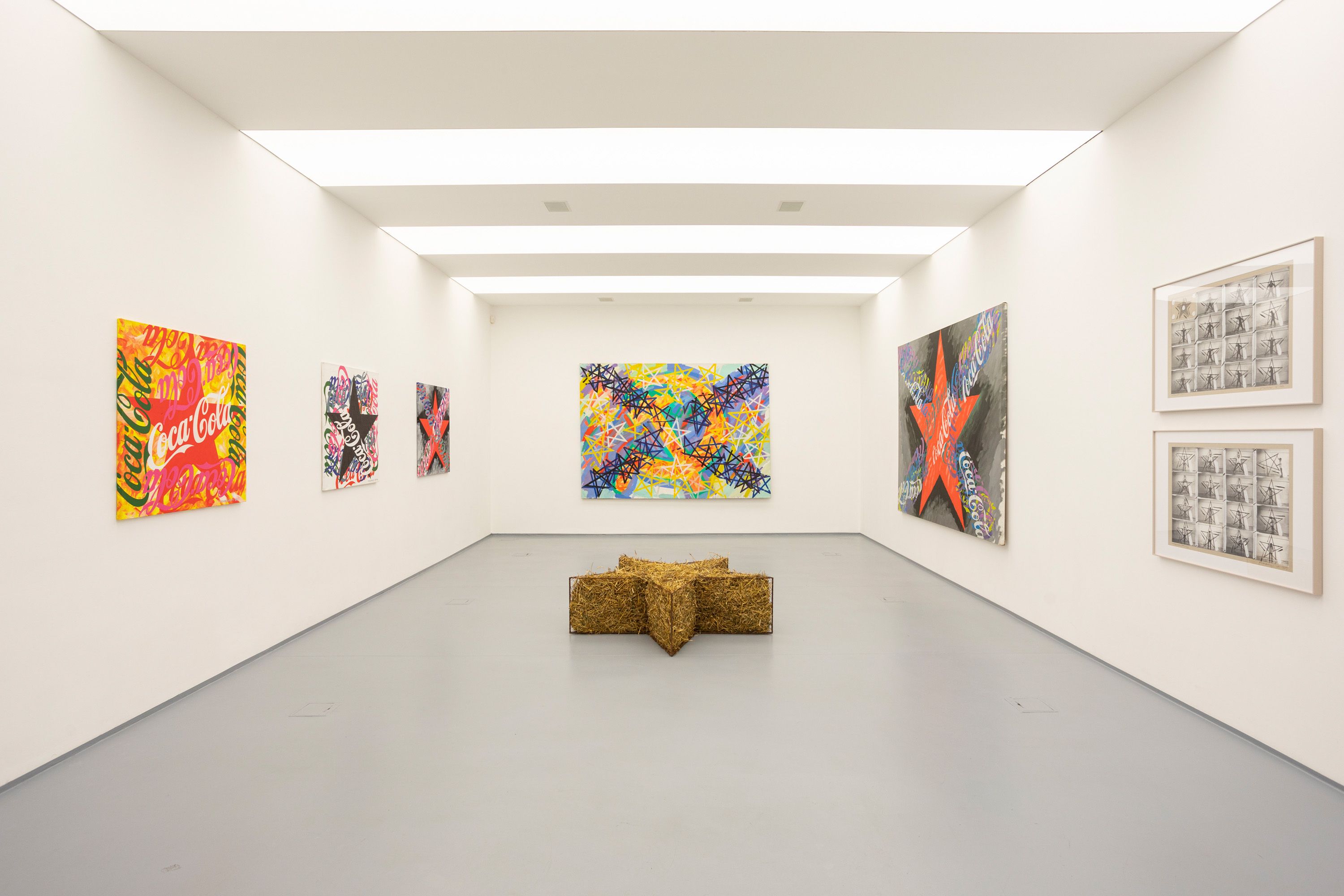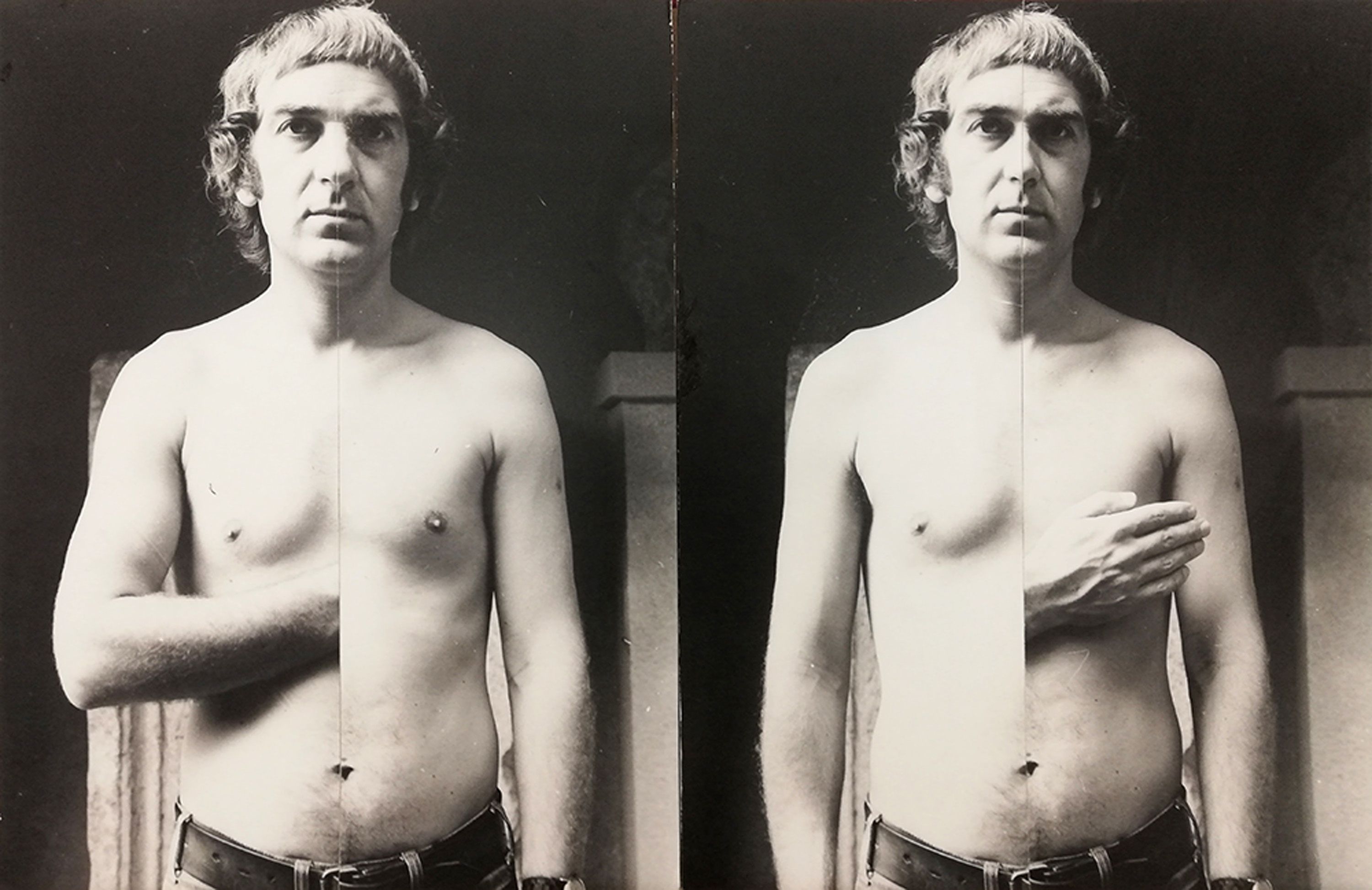Sándor Pinczehelyi
Carrying the Star
| Venue: | acb Gallery |
| Date: | Sep 18 – Oct 30, 2020 |
Description
The exhibition showcases a selection of Sándor Pinczehelyi’s (1946) body of works from the eighties, which concentrated on the motif of the five-pointed star, and also reflects on the artist’s participation in the Hungarian Pavilion of the 1988 Venice Biennale.
The exhibition centres on the series titled Star Carrying from 1989. In invoking the sequentiality of Pinczehelyi’s early process art, the series attests to the complex connections between geometry, symbols and the human body, while also showing the influence of painted-overdrawn photography from the new wave. The artist’s paintings from the late eighties – which belong to the group of works created simultaneously to those produced for the Venice Biennale – show the star in a different manner. In conjunction to the New Painting tendencies of the eighties, which also had an impact on Pinczehelyi’s art, these works were created through connecting expressive gestures to neutral, schematizing brand marks. In Pinczehelyi’s oeuvre, the genres of assemblage, environment and installation – whereby he lifts his characteristic motifs into three-dimensional space – have been present since 1983. It was in Venice that he first presented his work titled Star-Straw, which lent a new dimension to the modes of star-representation in his art. The exhibition held at the acb Gallery showcases a smaller-scale reconstruction of this object, alongside a selection of the artist’s photo series shot during the quarantine imposed to halt the spread of the COVID-19 pandemic in the spring of 2020.
Sándor Pinczehelyi is a member of the second generation of Hungarian neo-avantgarde artists. His career began in the Pécs Workshop, a formation of artists who sought to renew the language of constructivism and experimented with landscape interventions. It was in 1972 that he began to develop his iconography centred on the symbols of the Workers’ Movement (star, cobble stone, sickle and hammer), which through the decades became his signature. In the course of his conceptual art practice – which often drew on pop art and its Eastern European incarnations as well – he stripped these “revolutionary” symbols (which had also played a key role in the self-mythologisation of the political system) of their propagandistic-theatrical content and, through an ironic gesture, revealed their original function, thus “re-objectifying” them. In the early eighties, the set of motifs defining the artist’s personal mythology was expanded to include the RWG (red, white and green) thematic: through the three colours of the Hungarian flag, he explored the complicated ties between signs and products – exemplified by the transformation of Hungarian produce, marked by the national tricolour, into national export products –and, by the same token, the problematic of the relationship between human beings and nature.
On the occasion of the exhibition, a publication focusing on Sándor Pinczehelyi's works made in the eighties will be launched by acbResearchLab.
The exhibition is an event of the Hungarian Month of Photography 2020.


